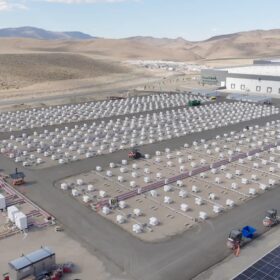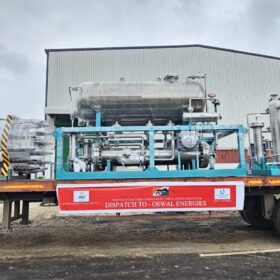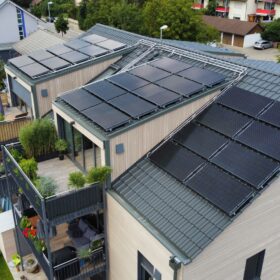Honeywell adds Li-ion Tamer for battery fire safety in buildings
Honeywell has acquired the Li-ion Tamer business from Nexceris, a leader in off-gas detection technology for lithium-ion batteries. Li-ion Tamer’s early warning technology detects battery off-gassing, which typically precedes thermal runaway, providing facilities with vital time to intervene before a battery fire starts.
VGF incentive cut may raise BESS tariffs by 10%, but impact likely temporary: SBICAPS
A new report by SBICAPS anticipates that the incentive cut under the second phase of the viability gap funding (VGF) scheme for standalone battery energy storage systems (BESS) could lead to a tariff increase of around 10%. However, it adds, this increase is manageable and could be absorbed in the coming months as capex costs continue to decline.
Redwood, Crusoe deploy second-life batteries at AI data center for 63 MWh storage
The second-life project represents the second largest deployment in North America, and the largest battery-powered microgrid.
Oswal Energies receives first hydrogen electrolyser dispatch from Greenzo Energy for INR 320 crore green hydrogen project
Oswal Energies Ltd has received the first 1 MW electrolyser stack from Greenzo Energy India Ltd, marking the operational launch of its INR 320 crore green hydrogen project.
Photovoltaics vs. photovoltaic-thermal
Researchers in India say that photovoltaic-thermal (PVT) systems offer greater performance stability than conventional PV systems in hot climates. Using irradiance and temperature data, the team applied a Random Forest model that predicted efficiency classes with 97% accuracy.
The rise of cell-to-pack technology: What it means for two- and three-wheelers in India
India is home to one of the largest markets for two- and three-wheelers globally, and these segments play a crucial role in urban mobility, last-mile delivery, and short-distance logistics. However, current electric variants often face challenges related to weight, range, and cost—all of which cell-to-pack (CTP) technology addresses directly.
From trash to treasure: Is India ready for battery recycling revolution?
Given the demand and the unavailability of Lithium, Nickel, Cobalt, Manganese, and Rare Earth Elements (REEs) in sufficient quantities, as a nation, we may be staring at a scenario we had with crude.
The Hydrogen Stream: Toyota Kirloskar, Ohmium to co-develop green hydrogen microgrid solutions in India
The partnership will explore scalable and cost-effective green hydrogen microgrid solutions by combining Toyota’s expertise in proton exchange membrane (PEM) fuel cell technology with Ohmium’s modular and high-efficiency PEM electrolyzer systems.
Greenzo secures INR 320 crore order for 20 MW green hydrogen project
Greenzo Energy India has secured an INR 320 crore order from Oswal Energies to supply electrolysers and balance of plant (BoP) equipment for a 20 MW green hydrogen facility.
Adani commissions off-grid 5 MW green hydrogen plant
Adani New Industries Ltd (ANIL) has launched a 5 MW green hydrogen pilot plant in Kutch, Gujarat. Powered entirely by solar energy and backed by battery storage, the plant runs fully off-grid, marking a new step in decentralized, renewable hydrogen production.















